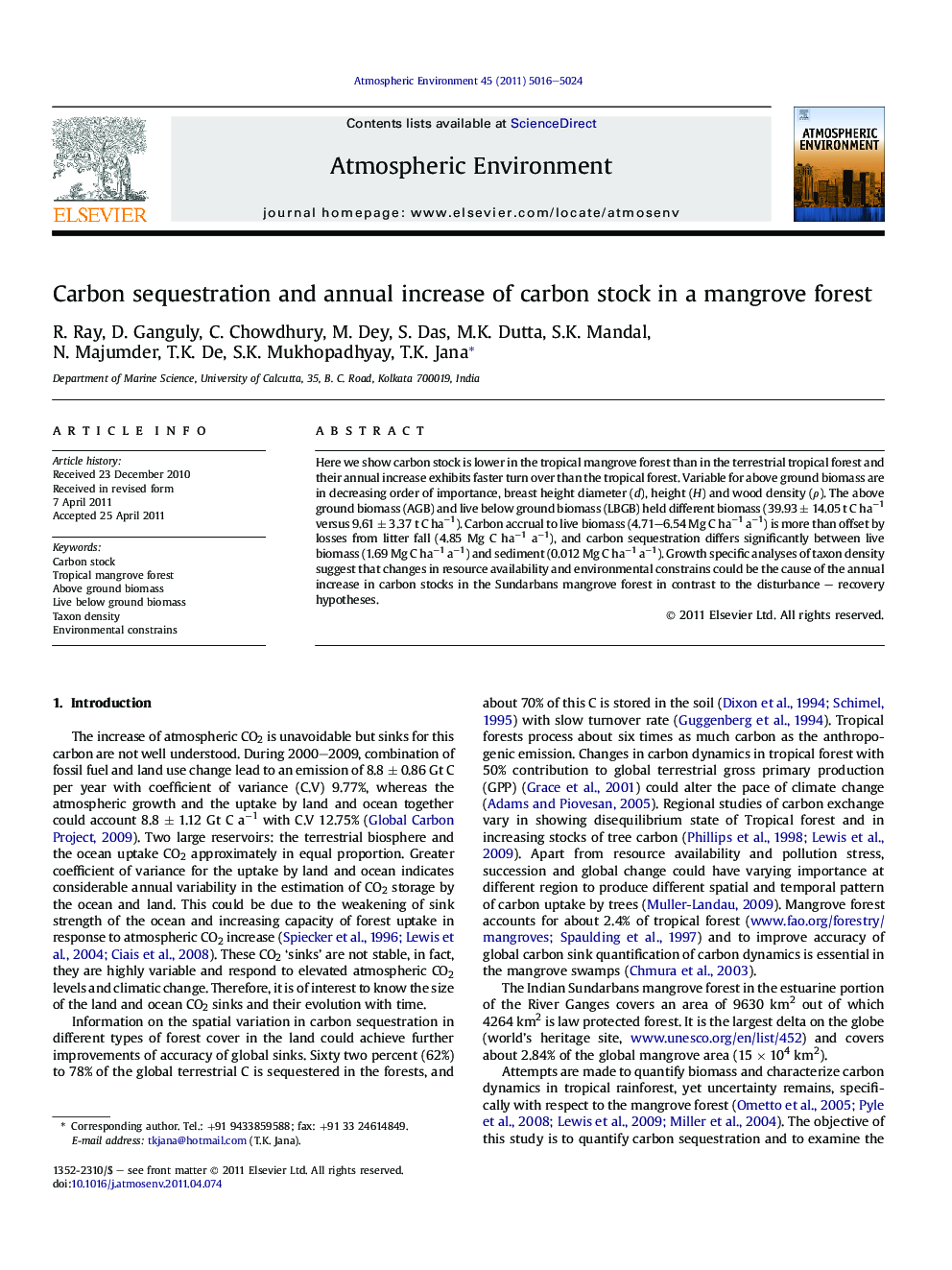| Article ID | Journal | Published Year | Pages | File Type |
|---|---|---|---|---|
| 4439610 | Atmospheric Environment | 2011 | 9 Pages |
Here we show carbon stock is lower in the tropical mangrove forest than in the terrestrial tropical forest and their annual increase exhibits faster turn over than the tropical forest. Variable for above ground biomass are in decreasing order of importance, breast height diameter (d), height (H) and wood density (ρ). The above ground biomass (AGB) and live below ground biomass (LBGB) held different biomass (39.93 ± 14.05 t C ha−1 versus 9.61 ± 3.37 t C ha−1). Carbon accrual to live biomass (4.71–6.54 Mg C ha−1 a−1) is more than offset by losses from litter fall (4.85 Mg C ha−1 a−1), and carbon sequestration differs significantly between live biomass (1.69 Mg C ha−1 a−1) and sediment (0.012 Mg C ha−1 a−1). Growth specific analyses of taxon density suggest that changes in resource availability and environmental constrains could be the cause of the annual increase in carbon stocks in the Sundarbans mangrove forest in contrast to the disturbance – recovery hypotheses.
► Mixed species mangrove biomass regression models have been developed. ► This model can be applied to estimate spatial variation of carbon sequestration. ► Annual increase of carbon stock exhibits faster turn over than the tropical forest. ► Carbon sink in terms of live biomass is several fold greater than that of sediment. ► Resource availability is more important over recovery from a significant disturbance.
